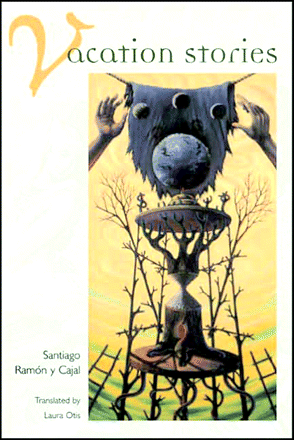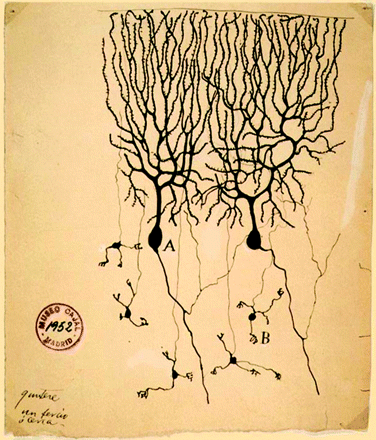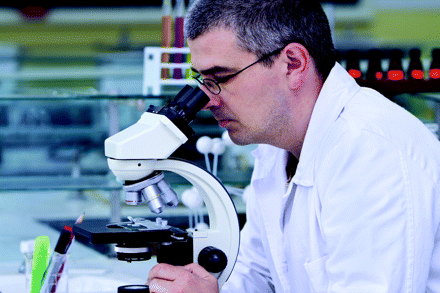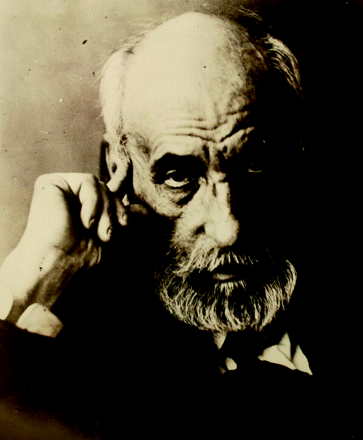Out to Lunch
- Amy Wecker, MD and
- Lynn Wecker, PhD

Vacation Stories: Five Science Fiction Tales Santiago Ramon y Cajal Trans. Laura Otis Champaign, IL: University of Illinois Press, 2006; 272 pages. $19.95 ISBN-13: 978-0252073557
In early 1873, Giuseppe Verdi traveled to Naples to direct and conduct a performance of Aida. The sudden illness of his soprano Teresa Stolz caused a stoppage in rehearsals. Perhaps to divert boredom, Verdi composed a chamber work: the String Quartet in E minor one of only three non-vocal works he ever published and certainly the most important, the other two being minor piano pieces. Initially, Verdi didn’t think highly of it, saying “I don’t know whether it is beautiful or ugly. I only know that it is a quartet.” Indeed, a few nights later its first performance was given only to a private audience at Verdi’s hotel. Once the performance was finished, the audience demanded a full encore. He later changed his mind about its worth and had it published. The quartet stands confidently with fine quartets by others. Not necessarily placed in the pantheon of string quartets, it is, nonetheless, an elegant work. Would that all geniuses were fluent in various genres….
Santiago Ramon y Cajal is no stranger to most scientists, particularly in the world of neuroscience. Although famous for his artistic rendering of neurons and seminal work on the structure of the nervous system, for which he shared the Nobel Prize in 1906 with Camillo Golgi, he is less known as a novelist. Ramon y Cajal wrote twelve short stories early in his career (during 1885 1886), several of these, perhaps diverting boredom, while on vacation. The five extant stories were published in 1905, in a volume entitled Vacation Stories. These stories may have been written for personal amusement only. On the other hand, Ramon y Cajal may have been concerned that publication of these stories would have harmed his career what were the other seven stories about? In any case, he published these stories under the pen name “Dr. Bacteria.” To a modern reader, was he right to be reluctant?
“For a Secret Offense, Secret Revenge,” is a twisted tale about a not-so-handsome, aging scientist. Is his lovely young wife guilty of infidelity with his laboratory assistant? As a clever scientist, our protagonist sets out to prove his theory by contaminating labels that his assistant uses with tuberculosis bacillus, and lo and behold, bacilli pustules soon appear on the assistant’s lips and tongue, and not much later, appear on the mouth of the protagonist’s wife. After the assistant dies in the sanitarium, love prevails as the protagonist discovers a new antibacterial that cures his wife, who, of course, never learns the truth and loves him unconditionally. So much for the medical mystery genre.

“The Fabricator of Honor” describes a classic psychological experiment to modify the behavior of an entire population through the power of suggestion. The small town of Villabronca was plagued with disorder and public immorality and the town leaders yearned to rid the town of these wrongdoings. Enter our central character, bearing MD, PhD credentials and well learned in hypnosis. A placebo is concocted that all believe will change the behavior of the inhabitants, and after much debate, this solution is injected into the majority of the townspeople ages 12 60 the ages at which we still apparently believe most vice is committed (routine HIV screening is recommended at least once for all people 13 65.) The “moral vaccine” takes hold and calm (morality?) reigns again. In time, however, those once held in high regard were not as powerful or esteemed as they once had been, and additionally, life had become extremely boring! Thus, another “serum” (actually water) was created to return individuals back to their original state. Vice and criminal behavior reigned supreme almost instantly, worse than before, and the esteemed doctor and his wife fled town. As elegantly stated by Ramon y Cajal: “Among the various ways of sugarcoating the suggestive pill and lulling the critical sense to sleep, there is none so effective as associating the suggestion with the banal act of taking some medicine or swallowing some therapeutic serum.” So much for the placebo effect.

The third story “The Accursed House” is about a young doctor who loses his inheritance in a shipwreck, and purchases an abandoned estate thought to be cursed (thus bringing the cost down considerably), to care for his future wife. The man who built the estate had fallen ill and died, as did his sons. The second owner prospered from the productive agricultural and cattle colony he built, only to succumb with his two daughters to some dreadful epidemic, while the third owner and his child also fell to illness. Our young doctor struggles against all odds and convinces the townspeople that the estate is not bewitched at all, but rather that all these occurrences were due to the presence of harmful bacteria. Thus, whereas in the last tale a scientist dupes an unknowing populace twice with suggestion, our protagonist in this story works hard to cure people of their superstitions through the valiant use of science. He employs modern (at the time) techniques to clean the water of Anopheles mosquitoes, responsible for prior malaria deaths, and “scorche[s] the topsoil” of the pasture to destroy the Bacillus anthracis. As he eloquently states, “…the causal conditions…are purely physical…neither God nor the devil has had any hand in them only the microbe, an invisible demon much more real and dangerous than all the evil entities dreamed up by naïve human ignorance and superstitious fear.” To a current reader, the story would have been better ending here. Unfortunately, Ramon y Cajal goes on to elaborate on the budding romance with such phrases as “boiling of fertile protoplasm” and “labial cells,” and the story fizzles out to a very anticlimactic end.

The fourth story “The Corrected Pessimist” is again about a young doctor, who, defeated in his views of the world, gets the opportunity from the “Great Unknown” to view the world through microscopic vision for several months. Observations of the world at the microscopic level are not unexpected from a scientist who spent much of his career peering into a microscope. Although he is fascinated by his new gift, it turns out to be quite the curse. The depressed doctor is barely able to eat or drink anymore as the proliferation of microbes in all he sees repulses him, and he is overwhelmed by the array of images he is constantly confronted with against his will. Although the scientist may find interest in passages such as “...meat …packets of red, contractile worms (striated muscle fibers)…bonbons filled with oily liquid and starlike crystallizations (adipose cells…)…,” the average reader of science fiction may not be enamored by these descriptions. Similarly, it is questionable whether the average reader would understand or embrace the idea that Ramon y Cajal is trying to convey when he states: “Juan had a bilious temperament and…suspicious brain, as rich in neuronal collaterals as in melancholic images.” At any rate, when the months have passed, our main character’s eyes return to normal and he is able to once again enjoy the simple pleasures of life, predictably turning him into an optimist forever.
The last story “The Natural Man and the Artifical Man,” is unlike the others. More a philosophical treatise, the tale is a dialog between two fellows who were friends early in life and happen to meet again years later. One friend began his life with many advantages but was now hopeless, while the other began with nothing and had built a successful career. The message echoes Ramon y Cajal’s insistence that only through critical thinking and self-reliance, and eschewing rationalism can mankind succeed and make a success of scientific endeavor.
What can we say about the stories written by this illustrious neuroanatomist? After struggling, often painfully, through the 242 pages of this book, we concluded that perhaps something was lost not so much in translation but in time. The background tone of his stories, which reflect the times he lived in, is now outdated, somewhat absurd, and perhaps not surprisingly, quite sexist. Also, his language can be dense. It might be unfair to judge past writers against modern, easier-to-read writers of medical fiction, such as Robin Cook or Michael Crichton. These stories are not for those interested in light reading for entertainment. They may be of interest, however, if you want to delve into the mind and heart of Santiago Ramon y Cajal, often referred to as the greatest neuroscientist of all time.
- © American Society for Pharmacology and Experimental Theraputics 2009





